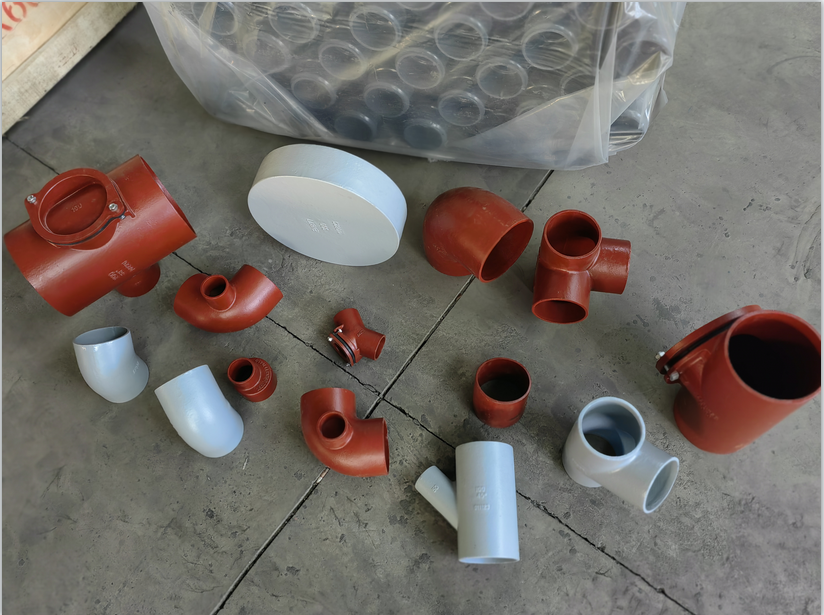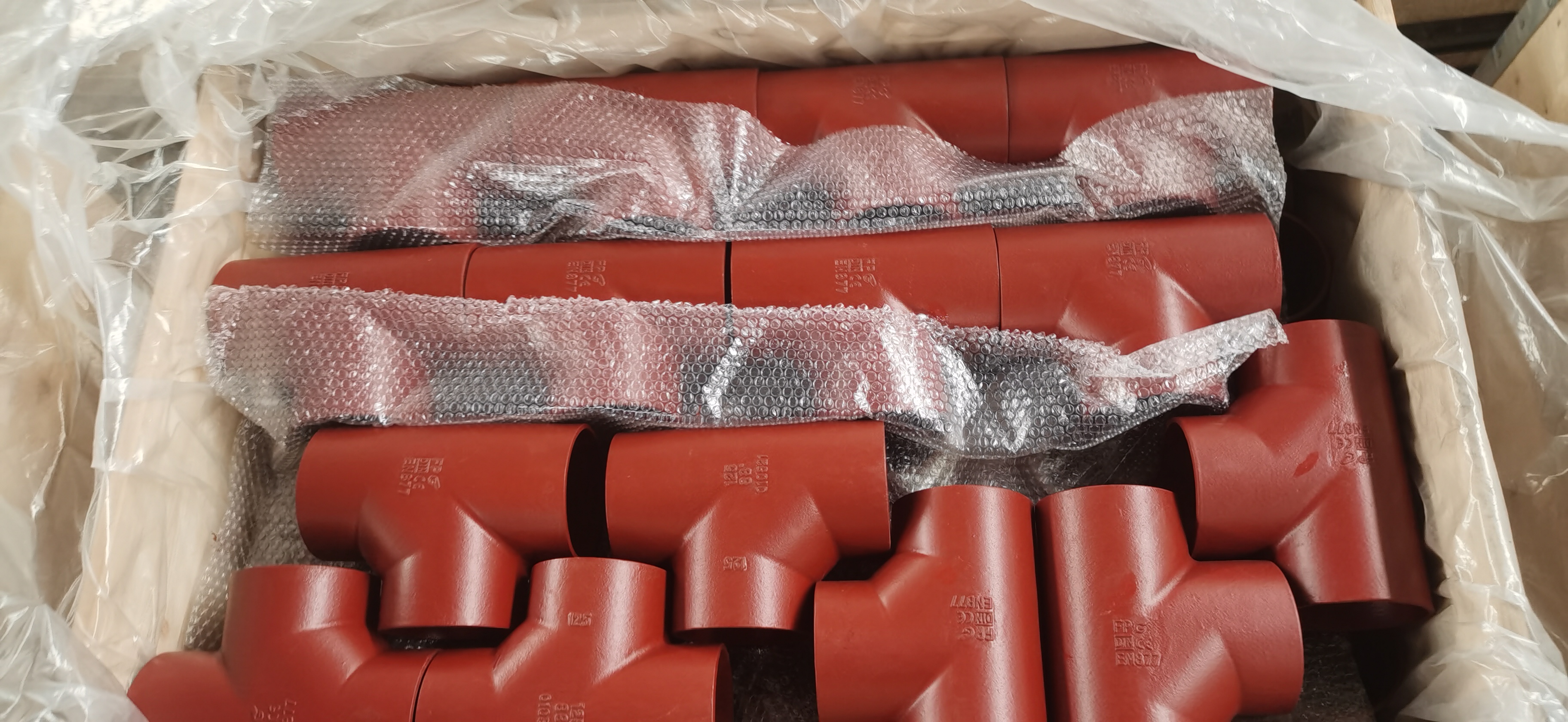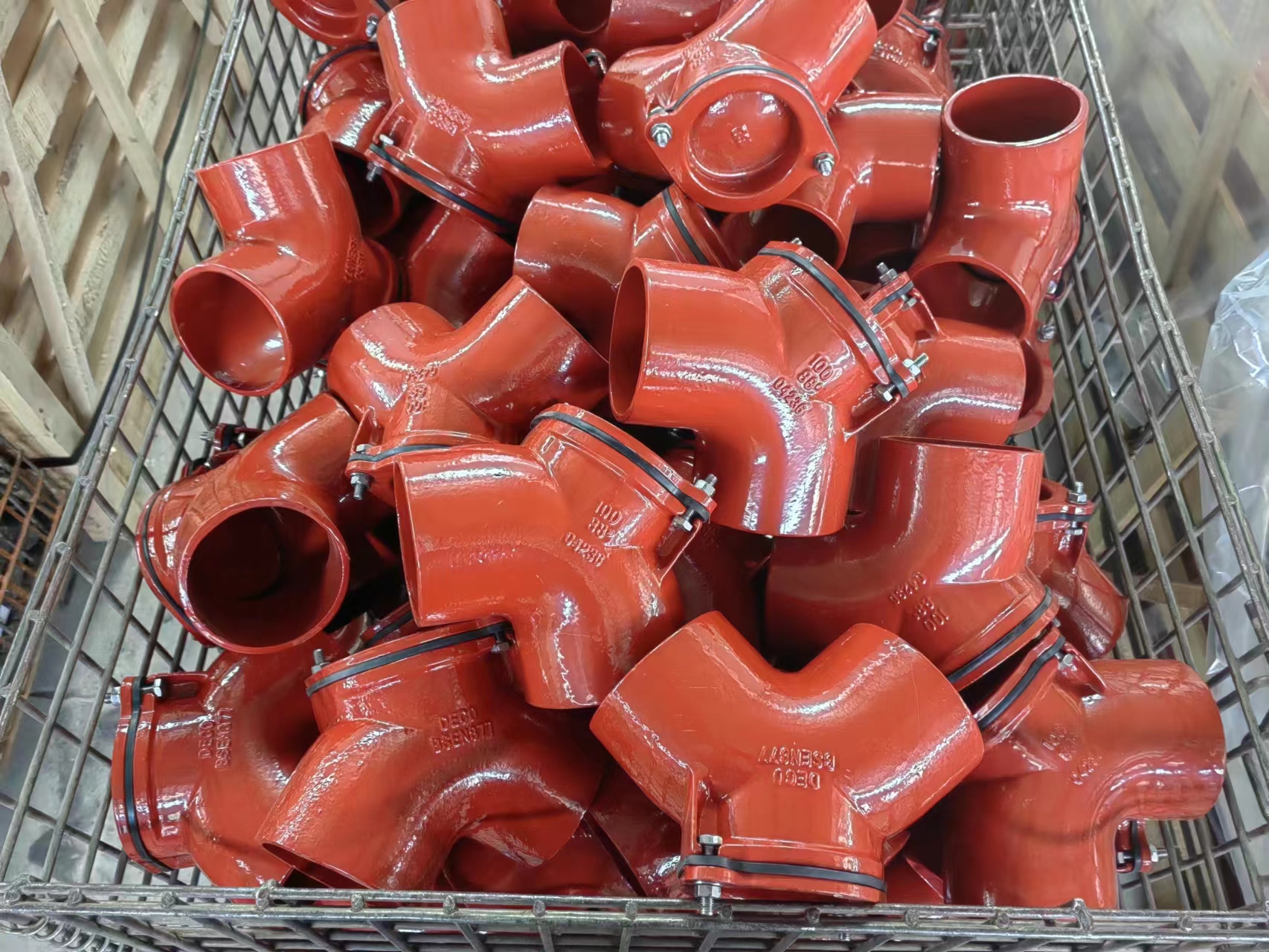1. What are the common application areas for Cast Iron Fitting ? Cast Iron Fittings are commonly used in various application areas due to their durability, strength, and excellent resistance to corrosion. These fittings are designed to connect or join cast iron pipes together, ensuring a secure and reliable connection.
One of the common application areas for cast iron fittings is in plumbing systems. These fittings are commonly used in both residential and commercial buildings for sewage and drainage systems. Cast iron fittings are capable of handling high-pressure wastewater flows and can effectively prevent leaks or pipe failure, making them ideal for plumbing applications.
Another application area for cast iron fittings is in the transportation of water or wastewater. They are often used in municipal water supply systems, irrigation systems, and industrial water treatment facilities. Cast iron fittings provide a tight and secure connection, ensuring efficient and reliable water transport without any leakage or loss.
Cast iron fittings are also widely used in the construction industry for underground sewage and stormwater systems. These fittings are resistant to the corrosive effects of sewage and chemical exposure, making them suitable for long-term and durable installations. They are commonly used in the construction of new buildings, as well as in the repair and maintenance of existing infrastructure.
Additionally, cast iron fittings find application in industrial settings where the transportation of fluids is required. They are commonly used in factories, manufacturing plants, and processing facilities for various applications such as ventilation systems, oil and gas pipelines, and chemical processing. The strength and durability of cast iron fittings make them suitable for handling high-pressure and high-temperature fluids in these industrial environments.
In summary, cast iron fittings are commonly used in plumbing systems, water and wastewater transportation, construction projects, and industrial applications. Their durability, strength, and resistance to corrosion make them an ideal choice for ensuring secure and reliable connections in various industries.
2. What are the advantages and disadvantages of Cast Iron Fitting ? Cast Iron Fittings have several advantages that make them a popular choice in various applications. Firstly, they are highly durable and have a long lifespan. Cast iron is known for its strength and ability to withstand heavy loads, making it ideal for applications that require robust and long-lasting fittings.
Secondly, Cast Iron Fittings have excellent resistance to corrosion. This is a crucial advantage, especially in plumbing and water transportation systems where exposure to moisture and chemicals is common. The corrosion resistance of cast iron fittings ensures that they maintain their structural integrity over time, reducing the risk of leaks or failures.
Another advantage of Cast Iron Fittings is their fire resistance. Cast iron has a high melting point, making it highly resistant to fire. This characteristic is particularly important in industrial settings where there is a risk of fire or in applications that involve the transportation of flammable materials.
Additionally, Cast Iron Fittings provide a tight and secure connection. The fittings are designed to ensure a proper fit, reducing the possibility of leaks or pipe separation. This feature is crucial in plumbing systems, as it helps to maintain water pressure and prevent water wastage.
However, there are also some disadvantages associated with Cast Iron Fittings. One of the main drawbacks is their weight. Cast iron fittings can be quite heavy compared to other materials, which can make installation and handling more challenging. This can increase labor and transportation costs, especially in larger projects.
Another disadvantage is the potential for corrosion on the inner surfaces of the fittings. Although cast iron fittings have excellent resistance to external corrosion, the internal surfaces can be susceptible to rust and build-up over time. This can lead to reduced flow capacity and require regular maintenance or cleaning.
Furthermore, cast iron fittings may have limited flexibility compared to other materials. This can make them less suitable for applications that require frequent changes or modifications to the piping system.
In conclusion, Cast Iron Fittings offer several advantages such as durability, corrosion resistance, fire resistance, and secure connections. However, the weight, potential for internal corrosion, and limited flexibility are some of the disadvantages that need to be considered when choosing cast iron fittings for a specific application. Overall, the decision to use cast iron fittings should be based on the specific requirements and conditions of the project.
3. What should you pay attention to when installing and maintaining Cast Iron Fitting ? When installing and maintaining Cast Iron Fittings, there are several important points to consider to ensure their proper functioning and longevity.
During the installation process, it is crucial to handle the fittings with care to prevent any damage. The fittings should be inspected for any defects or cracks before installation. Any damaged fittings should be replaced to avoid potential leaks or failures.
Proper alignment is essential when connecting Cast Iron Fittings. The pipes and fittings should be aligned correctly to ensure a secure and tight connection. Using a suitable lubricant or sealant can help facilitate the installation process and improve the effectiveness of the joint.
It is important to follow the manufacturer's guidelines and specifications for the installation of Cast Iron Fittings. This includes proper tightening of nuts and bolts to achieve the recommended torque. Over-tightening can lead to damage, while under-tightening can result in leaks.
Regular maintenance is essential to ensure the optimal performance of Cast Iron Fittings. Inspecting the fittings periodically for signs of corrosion, rust, or wear is important. Any signs of deterioration should be addressed promptly to prevent further damage.
Cleaning the fittings regularly is also necessary. This can be done by using appropriate cleaning agents or methods recommended by the manufacturer. Removing any build-up or debris will help maintain the flow capacity and prevent blockages.
In areas with high humidity or corrosive environments, additional measures may be required to protect the Cast Iron Fittings. Applying a suitable protective coating or using corrosion-resistant materials can help prolong the life of the fittings and reduce the risk of corrosion.
It is important to monitor the performance of Cast Iron Fittings over time. Any changes in water pressure, flow rate, or signs of leaks should be investigated and addressed promptly. Regular inspections and maintenance can help identify potential issues early on and prevent costly repairs or replacements.
In conclusion, proper installation and maintenance are crucial for the effective functioning and longevity of Cast Iron Fittings. Following the manufacturer's guidelines, handling the fittings with care, ensuring proper alignment, and conducting regular inspections and cleaning are all important steps to ensure the optimal performance of these fittings.
4. What is the difference between Cast Iron Fitting and fittings made of other materials ? Cast Iron Fittings differ from fittings made of other materials in several ways.
Firstly, one major difference is the material itself. Cast Iron Fittings are made of cast iron, which is known for its durability and strength. Cast iron has excellent resistance to corrosion and can withstand heavy loads, making it a popular choice for applications that require robust fittings. On the other hand, fittings made of other materials such as PVC, copper, or stainless steel may have different properties and characteristics.
Another difference lies in the installation process. Cast Iron Fittings often require specialized tools and techniques for installation. They may need to be joined using methods such as mechanical joints, compression gaskets, or hub and spigot connections. In contrast, fittings made of other materials may use different joining methods like solvent welding for PVC or soldering for copper.
The cost is also a factor that sets Cast Iron Fittings apart from fittings made of other materials. Cast Iron Fittings can be relatively expensive compared to fittings made of PVC or other types of plastic. However, the durability and longevity of cast iron make it a cost-effective choice in the long run, especially in applications where strength and resistance to corrosion are essential.
Furthermore, the weight of Cast Iron Fittings is another distinguishing factor. Cast iron is a dense material, and as a result, the fittings can be quite heavy. This can make installation and handling more challenging, especially in larger projects. Fittings made of other materials like PVC or plastic are generally lighter and easier to handle.
Lastly, the aesthetic appeal may differ between Cast Iron Fittings and fittings made of other materials. Cast Iron Fittings have a distinctive appearance with their dark, rough, and textured surface. This unique look can add a rustic or industrial aesthetic to a space. In contrast, fittings made of other materials like PVC or stainless steel may have a more modern and sleek appearance.
In summary, the difference between Cast Iron Fittings and fittings made of other materials lies in the material itself, the installation process, cost, weight, and aesthetic appeal. Factors such as durability, resistance to corrosion, and specific application requirements will determine the most suitable choice for a particular project.
5. How long is the lifespan of Cast Iron Fitting ? Is it corrosion resistant? The lifespan of Cast Iron Fittings can vary depending on several factors, including the quality of the fittings, the environment in which they are installed, and the maintenance practices implemented. Generally, Cast Iron Fittings are known for their durability and long lifespan. With proper installation and maintenance, they can last for several decades.
Cast Iron Fittings are highly corrosion resistant. Cast iron is a material known for its resistance to corrosion, making it an ideal choice for applications that involve exposure to moisture, chemicals, or corrosive substances. The iron in the cast iron forms a protective layer, known as a patina, which helps prevent further corrosion.
However, it is worth noting that while Cast Iron Fittings have excellent resistance to external corrosion, the internal surfaces may be susceptible to rust and build-up over time. Regular maintenance and inspections are essential to identify and address any signs of internal corrosion. Cleaning and flushing the fittings periodically can help remove any debris or build-up, ensuring the optimal performance and longevity of the fittings.
In addition, the corrosion resistance of Cast Iron Fittings can be further enhanced by applying protective coatings or using corrosion-resistant materials in areas with high humidity or corrosive environments. These measures can help prolong the lifespan of the fittings and reduce the risk of corrosion-related issues.
Overall, Cast Iron Fittings have a long lifespan and are highly corrosion resistant. However, proper maintenance, regular inspections, and the implementation of protective measures are crucial to ensure their optimal performance and longevity.
6. How heavy is the Cast Iron Fitting ? Will it affect installation and transportation? Cast Iron Fittings are known for their heavy weight compared to fittings made of other materials. The weight of Cast Iron Fittings can vary depending on their size and type. Generally, Cast Iron Fittings are heavier than fittings made of materials like PVC, copper, or plastic.
The weight of Cast Iron Fittings can present challenges during installation and transportation. Due to their heavy weight, it may require additional effort and manpower to handle and position the fittings correctly. Specialized tools and equipment may be needed to lift and maneuver the fittings safely, especially in larger projects.
The weight of Cast Iron Fittings can also affect transportation logistics. The heavy weight may require special vehicles or equipment to transport the fittings securely. It is important to consider the weight and size of the fittings when planning the transport route and ensuring that the vehicles used are capable of safely carrying the load.
Furthermore, the weight of Cast Iron Fittings can impact the structural support required during installation. It is essential to ensure that the installation area can accommodate the weight of the fittings and provide the necessary support to prevent any accidents or failures.
Despite the challenges posed by their weight, Cast Iron Fittings are chosen for their durability and strength. The heavy weight is a result of the dense cast iron material, which contributes to the fittings' robustness and longevity. With proper planning, equipment, and expertise, the installation and transportation of Cast Iron Fittings can be carried out effectively and safely.







